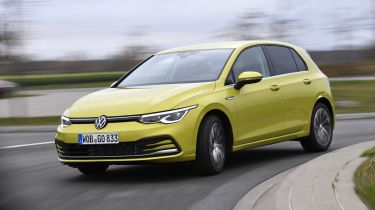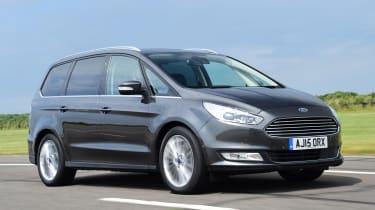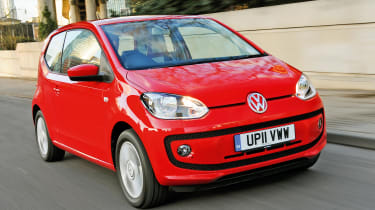What kind of cars do UK buyers like best?
The type of cars we buy in the UK has changed a lot in 10 years, here’s how...
As we’ve seen, the total number of UK car sales has remained relatively stable during the ‘Carbuyer years’ with 2019 sitting 14% up on the 2010 total and 14% down on the market peak in 2017. Within those figures, however, some far more dramatic changes were taking place.
SUVs
If we had to pick one trend that has had the biggest impact on the market and car consumer behaviour over the last decade, it would be the seemingly unstoppable rise of the SUV.
The explosion of interest in Sports Utility Vehicles coincides very neatly with the launch of Carbuyer in 2010. In January 2010, around 4,700 UK Google searches were made for the term ‘SUV’, by January 2015 it was 14,500 and in September 2020, 43,000 people in the UK were making that search. Around 45% of the total digital audience for car buying information in the UK is focused on SUVs today - in 2010 that figure was 15%.
This increase in demand for information on SUVs from the UK public has been fueled and mirrored by similar growth in the number of SUV models on the market, and in SUV sales. The SUV sector (defined as ‘dual purpose’ vehicles by the SMMT in the graph above) has been far and away the biggest sector of growth in the last 10 years.
We’ve seen a 259% increase in SUV sales from 2010 to 2019. Manufacturers who didn’t offer a single SUV in 2010, such as Jaguar, Renault and SEAT, now have whole ranges for buyers to mull over. Those that already had a foot in the sports utility door have also expanded their offerings, almost without exception.
Ten years ago, only 6.2% of Mercedes models sold in the UK were SUVs and in 2019 it was 26%. A range comprising the ML and GL a decade ago now includes the GLA, GLB, GLC, GLC Coupe, GLE, GLE Coupe, GLS, G-Glass and the EQC, with more EQ-badged electric variants in the pipeline. Renault, which didn’t have an SUV in 2010, can attribute 37% of its 2019 UK sales to that class of vehicle.
Why have Sports Utility Vehicles captured the imagination of motorists in this way? It’s all about the ‘utility’ and the ‘sport’. The rugged, go-anywhere, sporty image of the SUV gave them a perceived edge over traditional hatchbacks, saloons and estates. It’s quite possible that the majority of SUVs spend their lives on the school or supermarket run but consumers have been taken with their image and potential for adventure.
More tellingly, these cars are practical and easy to live with. The higher seating position gives everyone a good view out and makes loading cargo and kids less of a strain. Back in 2010, there were still cars that traded on actual off-road ability but they were compromised on it.
As the decade progressed, however, we’ve seen SUVs developed first and foremost with the road in mind. Generally speaking, they’re more refined, maneuverable and economical than before, many ditching all-wheel drive completely in favour of front-wheel drive. With modern engines and electrified powertrains, the old image of the ‘gas-guzzling’ 4x4 rumbling around suburbia is increasingly outdated.
Sectors under pressure
Where SUVs have been the undisputed winners of the last 10 years, stealing the hearts of the nation’s motorists, there, of course, had to be some losers…
Large family cars
Back when Carbuyer launched in 2010, the Nissan Qashqai had just entered the best-selling cars list for the first time in 10th place, pushing the Ford Mondeo into 11th position. The Qashqai launched in 2006 was one of the trailblazers of the SUV boom, bringing a car-like driving experience and great practicality in a stylish and relatively affordable package. By usurping the Mondeo, it told the tale of what was to come for the mid-sized family car sector.
The SUV has stolen sales across the board. The supermini sector, still the UK’s largest, has come under pressure in recent years as more supermini-sized SUV models have arrived and there’s been a similar effect on the family hatchback class above, otherwise known as the lower medium C segment. The upper medium D sector of larger family cars like the Ford Mondeo and Vauxhall Insignia has had it worse though, falling 36% between 2010 and 2019.
MPVs
MPVs, once the go-to utility vehicles for people whose families had outgrown hatchbacks or estates, have also declined in popularity. Around 40% fewer of these were sold in 2019 than in 2010, with the number of MPV models on sale declining from over 40 at the start of the decade to just over 20 today. Buyers of the seven-seat MPV models in particular simply decided that a seven-seat SUV was more appealing.
City cars
The smallest city car class has taken a sharp decline as well but for slightly different reasons. Manufacturers were already finding that they had to share development costs to make these cheap urban runabouts profitable but the demands of ever-tightening safety and emissions legislation have seen profit margins squeezed even further.
There were 23 different city car models available from mainstream brands in 2010. In 2019 there are 13, and we expect numbers to dwindle again as existing models come to the end of their life-cycles and are not replaced. From a peak of 84,000 units in 2014, the city car sector has almost halved to 42,000 units in 2019.
At the price that manufacturers need to sell them, these little cars are often so close to models in the supermini class above that we advise buyers to make the step up to the larger, more substantial car. If the trend continues, and given the push to lower emissions and combat traffic problems in our urban centres, compact, lightweight cars like these may prove to be a big loss in the future.
You can read up on all the Carbuyer Car of the Year award winners here or click the links below for more on 10 years of Carbuyer and car buying...
- 10 years of Carbuyer
- Car buying in the digital world
- What’s changed in the UK car market?
- What kind of cars do UK buyers like best?
- MPG, emissions and going electric: what does it all mean for car buyers?
- How far has car safety come in a decade?
- Car finance and the PCP. How car buying went into credit
- The future of cars and car buying
Most Popular
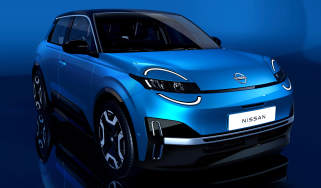
New Nissan Micra is a Renault 5 in Nissan clothing
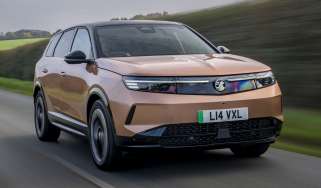
Vauxhall cuts EV prices to avoid revised luxury car tax
Tips & advice

Car dashboard warning lights: what does each symbol mean?

Electric car charging stations: public networks, charger types, apps and maps


